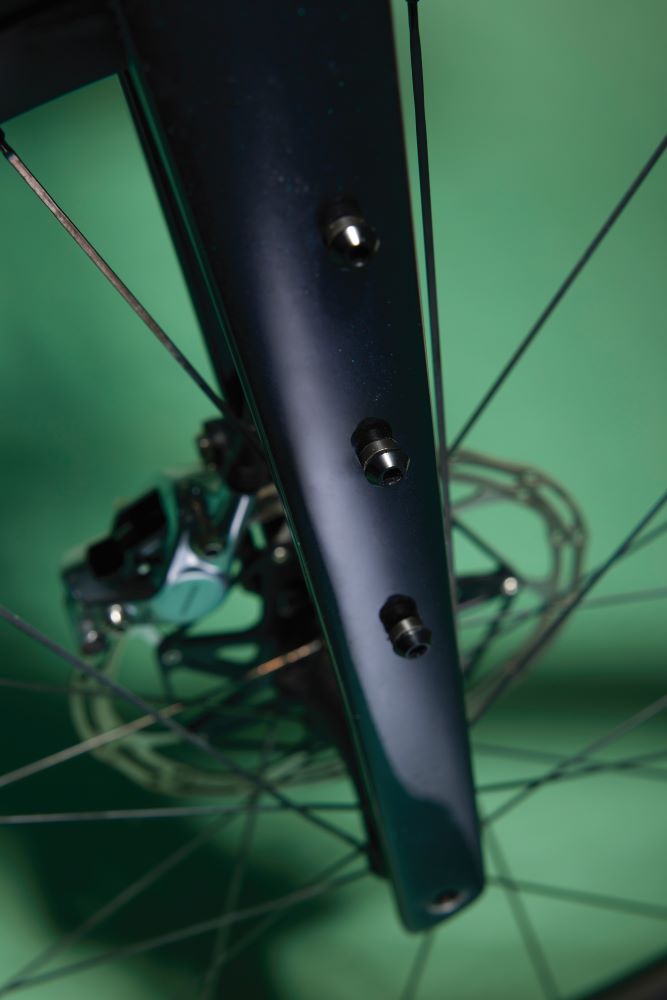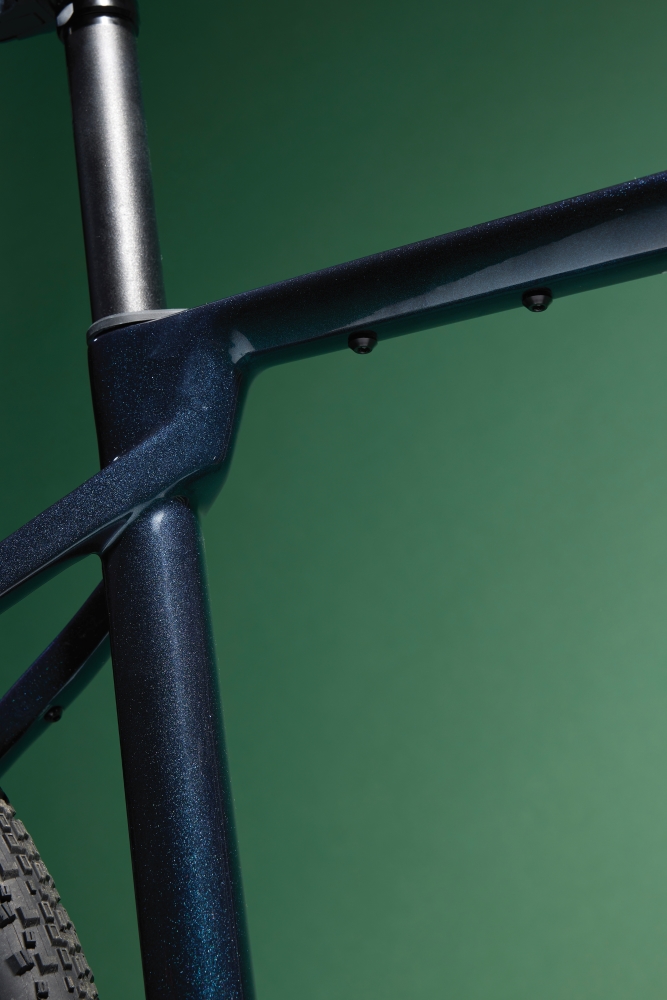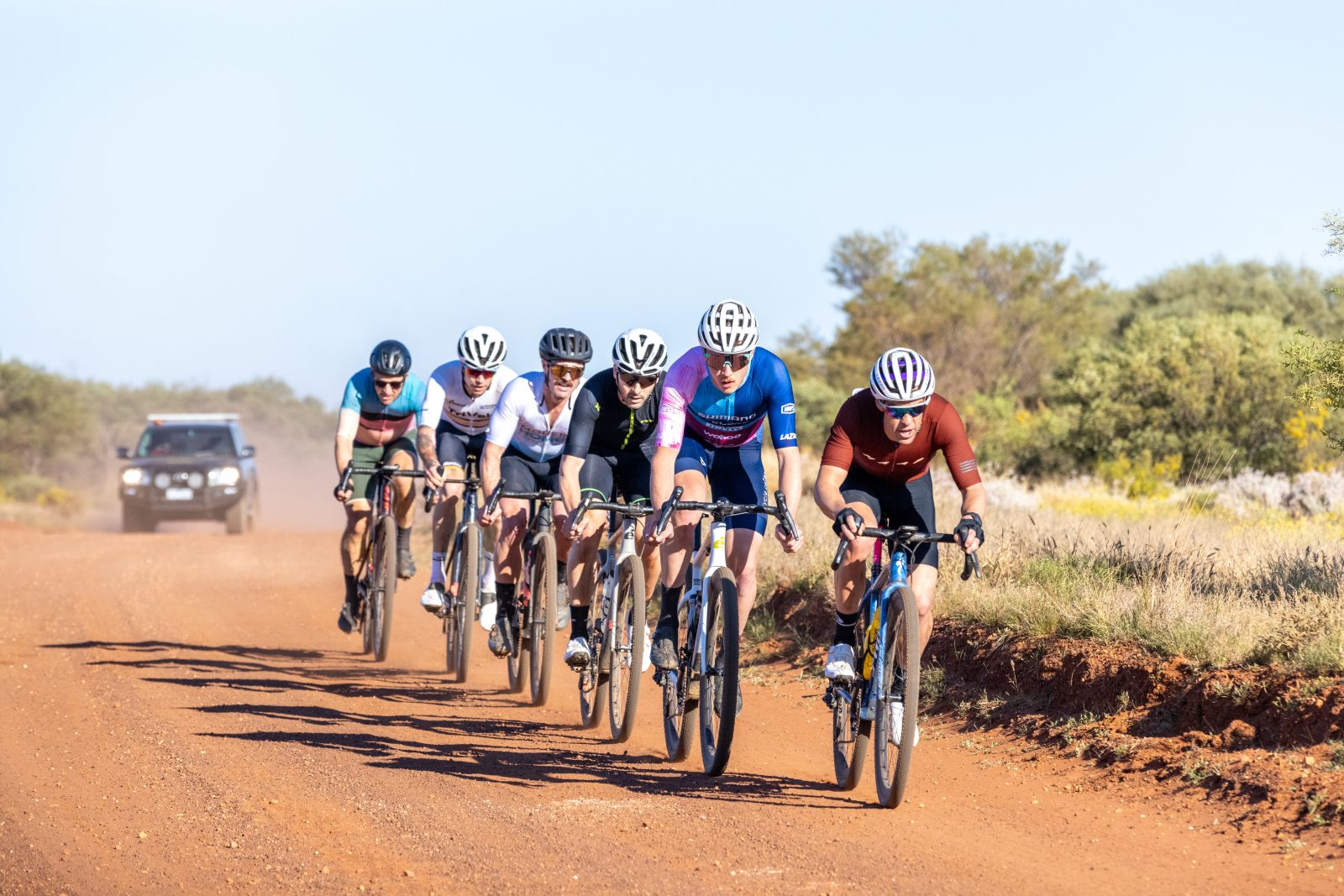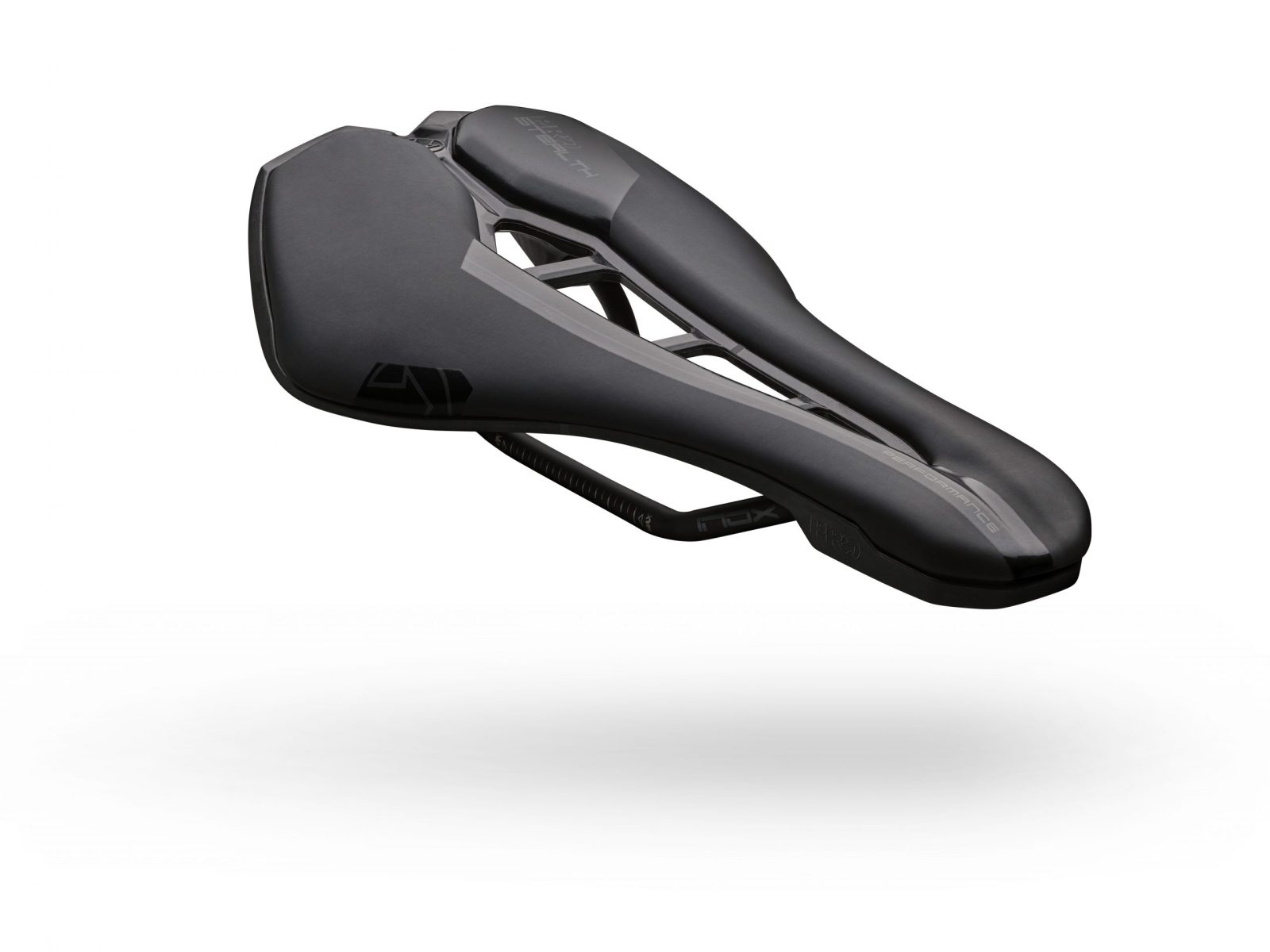MTB-inspired features make Merida’s second Silex unrecognisable – oh, and it just happened to win the Gravel Worlds

Words James Spender Photography Tapestry
Merida could have halted the marketing campaign for its latest Silex after Matej Mohorič won the 2023 Gravel World Championships on one.
By the Slovenian’s own admission – never mind his bike sponsor’s amazement – he wasn’t really supposed to win, and it might be fair to say the Merida Silex wasn’t supposed to win either.
But then, that’s the thing. Merida says the Silex has been designed to be way more capable than the average gravel bike and has introduced some fairly radical features into the second generation of the model to ensure it lives up to its billing.
The headlines are as follows: max tyre size 700c x 45mm (or 42mm with mudguards); dropped chainstays; 1x and 2x-compatible; multiple fork and frame luggage mounts; dropper post-compatible; option for fully integrated cables with an FSA ACR/SMR cockpit (though as is, cables are all but hidden thanks to the bike’s Wire Port headset); 180mm disc rotors as standard; internal front dynamo hub routing; alloy Silex frame version.
Carbon frame weight a claimed 1,220g, alloy frame 1,900g, fork weight 580g. But honestly, those are the least telling elements of the Silex.
Rather, this bike is best understood through its geometry.
‘It’s mountain bike-inspired,’ says the Silex’s product manager, Hannes Noller. ‘That means the top tube is long and the head tube angle is slack. We’ve made it so you could swap in a short-travel suspension fork and it wouldn’t upset the geometry.’
In numbers, that means a size medium Silex has a 580mm top tube and 69.5° head tube – which is a full 1.5° slacker than the outgoing Silex.

Add in 430mm chainstays and the wheelbase comes out at 1,082mm. Compare those numbers to an aggressive hardtail mountain bike and you start to see the Silex’s leanings.
Furthering that mountain bike feel is the 80mm stem, which is the same size across all frame sizes.
This brings the overall reach back to something that fits conventionally despite the stretched-out frame dimensions, while sharpening up the handling too.
The Silex’s fork has a 45mm offset, meaning trail is a huge – and otherwise slow-handling – 87mm, so short stems tend to quicken up how handling feels, as a small movement of the bars elicits a greater turn of the wheel when compared to a longer stem.
Complementary components
The new Silex is offered in a six-bike range and gearing is unilaterally low, using sub-compact 2x chainsets or else 1x chainrings with wide-range cassettes.

Merida says the thinking is that, when combined with the bike’s long wheelbase for better weight distribution, the low gearing should perform like a boat winch on off-road climbs.
It’s interesting to note here that the maximum recommended chainring size is 46t, albeit Mohorič was running a 50/34t on his World Championships Silex, and had just about enough clearance.
The Silex isn’t just about capability up climbs either. Again taking inspiration from the mountain bike world, Merida has built in provisions to make the bike rock solid down the other side.
The Silex uses 180mm rotors front and rear, where 160mm is to be more commonly expected.
The incidences of 180mm rotor use on drop bar bikes are few and far between, but Merida has form in this regard: that man Mohorič used a 180mm front rotor on his Merida Scultura road bike when he executed one of the greatest descents of the Poggio in recent memory to win the 2022 edition of Milan-San Remo.
‘Bigger rotors manage heat better and they work better with a loaded bike, but they only weigh a few grams more, so why not?’ says Noller.
Smaller 160mm rotors will also fit if you remove the mounts, but that does mean doing away with Merida’s Disc Cooler brake mount.

The Disc Cooler is designed to operate like a heat sink, sitting sandwiched between frame/fork and calliper so as to dissipate heat through a finned aluminium surface.
Tellingly, you won’t see Disc Coolers on most Merida pro bikes – because, according to Noller, ‘they don’t help heat management’.
Elsewhere there are some other nice touches. The frame features a recessed bottle cage area on the down tube specifically designed to fit the Fidlock magnetic bottle system, where a bottle locates on two studs.
A blanking plate is supplied for those wishing to use regular cage systems. Under the saddle (made by Merida) is a hidden multitool, and the thru-axle levers detach to reveal a 6mm hex wrench that slims to a 4mm at its tip.
It all speaks to the other thing the Silex is positioned at: utility. Noller says he rode Badlands – the 800km unsupported gravel race across Spain featuring 16,000m of ascent – on a loaded-up Silex.
That’s probably a pretty accurate example of the new Silex’s remit: a bike for those whose gravel riding regularly strays into the back of beyond, but who also take in some more pedestrian stuff to get there.
Or if you want to win a World Champs, it might just work too.
Merida Silex 10K
AU Price $10,999
merida-bikes.com/en-au



